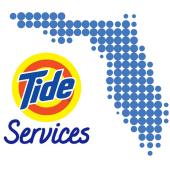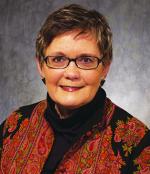Counting Down 2025’s Top 10 Stories (Part 1)

CHICAGO — We hear 2026 knocking on the door, but before we let it in, let’s take a last look at 2025 and review its top stories posted on AmericanDrycleaner.com that garnered the most reader interest (by page views). Let’s start with No. 10:
10. EPA Reopens Perc Regulations for Public Comment, Aug. 6
The Environmental Protection Agency (EPA) sought public input on its perchloroethylene (perc) rule after several legal challenges forced a reconsideration of the December 2024 regulation that imposed strict workplace exposure limits and prohibited certain uses. Drycleaning & Laundry Institute (DLI) CEO Mary Scalco said the organization remains committed to working with EPA to ensure practical regulations while advocating for sufficient transition time.
9. LA Wildfires Leave Lasting Impact on Area's Dry Cleaners, Jan. 15
When wildfires ravaged parts of Los Angeles early in the year, California Cleaners Association President Ray Rangwala reported at least eight or nine stores had burned, with many more operators losing their customer bases as entire neighborhoods were destroyed. Recovery timelines could stretch years, Rangwala said then, as roads remained closed and rebuilding efforts faced long delays.
8. DLI Unveils Social Media Campaign to Educate Consumers, March 12
DLI launched a grassroots social media initiative inspired by the iconic "Got Milk?" strategy, inviting all dry cleaners to join forces in educating consumers about professional garment care.
Developed by DLI’s Social Media Action Committee working with an outside strategic consulting company, the campaign targeted urban professionals in their late 20s to early 40s using video-driven posts focusing on themes like the value of time, confidence, sustainability, community involvement and industry innovations.
7. Tide Cleaners Opens New Franchise Locations in Two States, June 2
Tide Cleaners expanded its footprint with new stores in Boynton Beach, Florida, and Farmington Hills, Michigan. The Boynton Beach location marked the 20th store in South Florida for franchisee Consolidated Cleaners Inc. The Farmington Hills store, serving Metro Detroit and owned by local franchisee Ankur Patel, celebrated its opening by partnering with local nonprofit Let's Make a Difference to support families in need.
6. DLI Elects New Leadership for 2025-2026 Term, Sept. 15
DLI elected its new board of directors for the 2025-2026 term. Kyle Nesbit advanced from president to chairman, while Toran Brown of Rytina Fine Cleaners & Launderers became president. Raymond Kroner of Kroner Dry Cleaners became president-elect, and Don Holecek of Crown Cleaners was chosen as treasurer. The board bid farewell to departing Chairman Kathy Benzinger and District Six Committee Member Allan Cripe.
Come back next Tuesday (Dec. 30), when we’ll reveal our top five articles of 2025!

DLI Readies January Lineup to Help Cleaners Hone Skills

Bridging the Generation Gap in Your Drycleaning Business (Conclusion)

ZIPS Cleaners Graduates Fourth Certified Trainer Class

Bridging the Generation Gap in Your Drycleaning Business (Part 2)

Clean Brands Adds Fields as VP of Franchise Operations

Bridging the Generation Gap in Your Drycleaning Business (Part 1)

DLI Completes Final Hands-On Drycleaning Courses for 2025

Heat-Stress Prevention for Drycleaning Employees (Conclusion)

Tide Cleaners Expands on Florida’s Space Coast

Heat-Stress Prevention for Drycleaning Employees (Part 2)
Podcasts for You
Workplace Violence & Prevention

After a deadly shooting at a textile care facility earlier this year, preventing workplace violence has gained a new focus for many dry cleaners. Carol Dodgen of Dodgen Security Consulting and Jay Juffre from ImageFIRST discuss warning signs, training, prevention and more.
Let's Get to Know: American Drycleaner Columnist Diana Vollmer!

Diana Vollmer, popular American Drycleaner columnist, talks about growing up in the rural midwest, along with hobbies, interests and her writing.
Selling Young Adults on Dry Cleaning's Value

Jennifer Marquardt, a partner in Arthur’s Executive Cleaners, shares her experiences of adding young adults to her client base — including what they’re looking for, what they expect and what they might not know a cleaner can do.
From the Resource Center
Podcast: 2025 Dry Cleaning Trends and Upcoming Xplor Spot Projects

The Complete Spotting Guide & More

Attracting Customers & Increasing Profits—Drycleaning Marketing 101

Latest Digital Editions
Digital EditionAmerican DrycleanerDec/Jan

- What Will 2026 Bring?
- Drycleaning Customers Who Left a Mark
- Bridging the Generation Gap in Your Drycleaning Business

